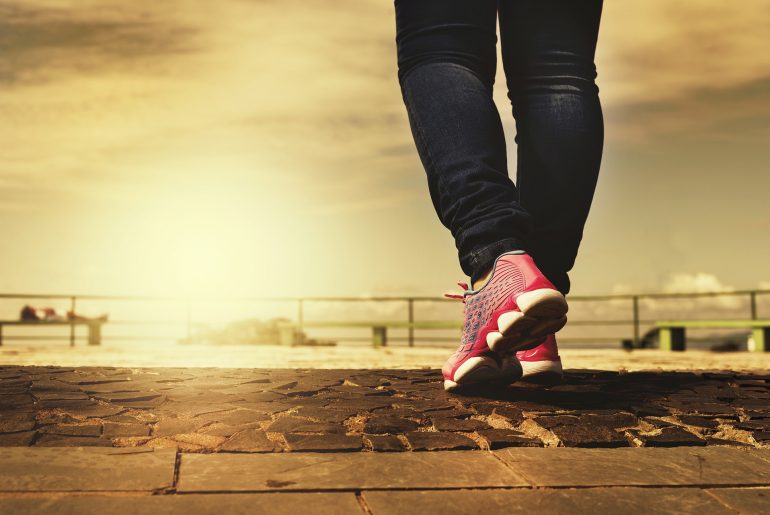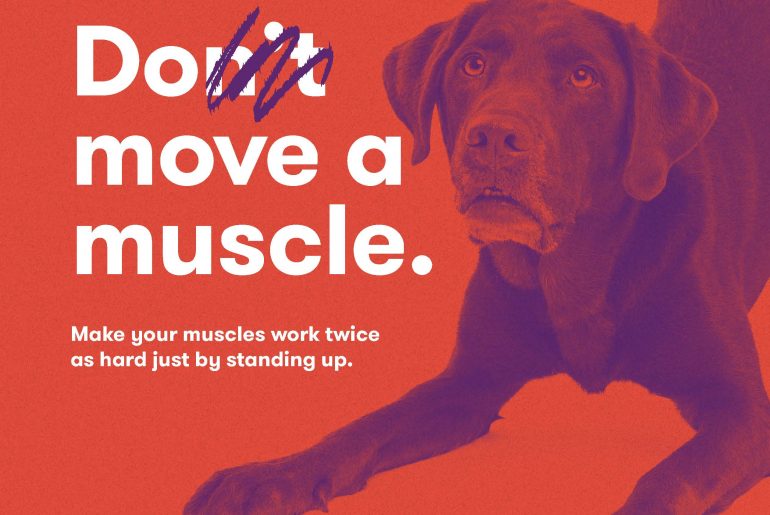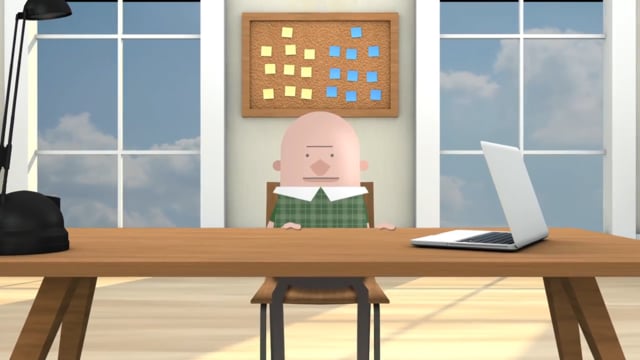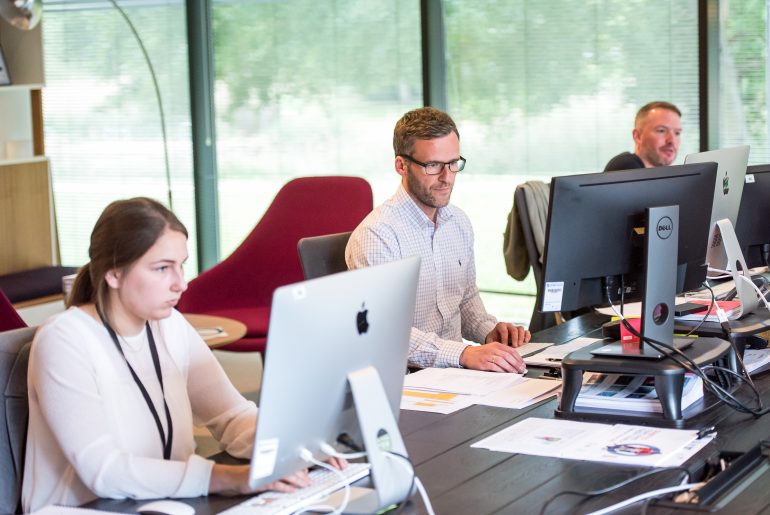The 40-hour work week, a staple of modern office employment, is seldom questioned. In an article for the Canadian publication The Globe and Mail, author Cynthia McQueen asks us, in the age of the videoconferencing and interconnectedness though the internet of things why do we commute at all? The cost of a rigid 9-5 day is measured financially. The author cites a University of Guelph study that found a personal financial boon of between 8,800-23900 $CAD/year saved by eschewing the daily commute. Commuting, as the author points out also costs us time. While BeUpstanding Champions focus on harnessing the increased productivity of movement in the office, the time commuting by car to our places of work remains intractably sedentary. Should the saved commuting time of a flexible workplace be put towards movement the author points out, research shows a potential reduction in sick days by a stunning 27%. The Conference Board of Canada estimated that in 2012 alone workplace absences cost 16.6 billion CAD. In light of the mounting evidence it is no wonder that the majority of Canadian workplaces now offer some form of flexible work contract. With the mounting burden of evidence available to employers it isn’t hard…
The Goldilocks Zone for Movement
It takes no large leap of the imagination to see that the human body was not shaped for a life in an office chair, car, or couch. Our ancestors were habitual movers constantly engaging in mild to moderate exercise. That is all well and good you may say, but as westerners with lives dominated by sedentary behaviour exercise must be supplemented back into our lives. A recent meta-analysis on movement lays out guidelines for a “Goldilocks” zone of exercise for maximal health benefits. This approach bestows maximal benefit with as little as 50 minutes per week (equivalent to running just 5-6 miles). The study emphasised diminishing returns from daily high aerobic exercise in favour of more frequent low to moderate exercise such as walking or yoga. The study references of cohort of daily endurance athletes over the age of 45 who were measured to have an increased risk for cardiovascular events as compared to those with a more moderate activity profile. Key Take Aways: Sitting should be limited to 30 minutes at a time punctuated by a “brisk” 5 minute walk Use a sit-standing desk when possible to alternate postures regularly There is no upper limit for mild to moderate…
Benefits of Walking to Work
By Anna Rasmussen On the 4th October it was Diabetes Australia Walk to Work Day. Walking has become an integral part of my daily routine. I spend between two and ten hours each week walking to and from destinations including university or the hospital where I study, the weekend markets, or the shops. The World Health Organisation has acknowledged active transport as a way to improve global environmental and health outcomes. My motivations are primarily to benefit my physical and mental health, but walking has other benefits such as being non-polluting, posing little danger to others, saving money, and, perhaps mostly importantly, I enjoy it. I am, however, one of the minority in Australia that uses walking as their main form of transit. The 2016 Census found that 69% Australian commuters travelled to work by car, and another 5% as car passengers, while 9% used public transport, 1% cycled, 4% walked, and 4% used multiple methods. This is largely consistent with rates from 2011, with a 0.5% rise in driving a car and a 0.7% increase in train use, while cycling and walking declined 0.1% and 0.3% respectively. Furthermore, infrastructure and culture is becoming increasingly car-centric. This is not to…
Do move a muscle
It is hard to imagine too many situations in the office where you would need to freeze and not move a muscle. Hence – our week 4 poster invites BeUpstanding participants to “do move a muscle”, and to do so regularly throughout the day. But what are the benefits of doing this? When we are seated, our large postural muscles in our legs do not have to work very hard. However, just by standing up, muscle activation can increase substantially. For example, one study in 84 middle aged volunteers from Finland were asked to wear special shorts that measured the electromyographic (EMG) or muscle activity of their quadriceps and hamstrings. They were asked to do a number of activities (lying down, standing, sitting, squatting, stair climbing, walking, running) as well as a maximal isometric voluntary contraction (MVC) – a standard test for measuring muscle strength. The EMG activity of each of the tasks was then compared to what the participant achieved during the MVC. When sitting, participants thigh muscles were only activated at about 1% of their maximum. This increased to 2.5% just by standing, about 10-12% by walking, and a substantial 22-25% by squatting or climbing up stairs. In…
Safe Work Month – Free Community Breakfast
This October is National Safe Work Month, an initiative of Safe Work Australia. Safe Work Month focuses on asking workers and employers across Australia to commit to building safe and healthy workplaces for all Australians. To launch Safe Work Month, Workplace Health and Safety Queensland are hosting a free breakfast on Wednesday 2 October 2019 at King George Square, Ann St, Brisbane from 7am to 9:30am. There will be free food, lucky draw prizes and giveways, cooking demonstrations and more. The BeUpstanding team will also be there to talk to you about how your workplace can sit less and move more and you can even sign up to be a BeUpstanding Champion on the day. We hope to see you there!
“Sit less—move more and more often”: all physical activity is beneficial for longevity
This article was originally published in the BMJ Opinion on 21st August 2019. New research shows that any level of movement decreases risk of premature death, so get moving say Ulf Ekelund and Thomas Yates It is well established that physical activity of a moderate or vigorous intensity (such as brisk walking) is good for your health. More recently, it has also been shown that people in contemporary societies are spending the majority of their day sitting, and that this prolonged sitting is also linked to an increased risk for many chronic diseases and premature death. Current physical activity recommendations, including those recently updated for the US, suggest that at least 150 minutes per week of moderate intensity physical activity is needed to keep healthy and that prolonged sitting should be avoided. However, how much sitting is too much? This is not specified and is widely debated. In addition, are levels of physical activity below those recommended still beneficial for health and does light intensity physical activity still count? Answering these questions have huge relevance for health promotion. We performed a study to address these questions. Our results suggest strong associations between total physical activity and the risk of dying.…
An Exercise Regimen Everyone Can Squeeze In
The following article was written by Emmanuel Stamatakis and published in The Conversation on the 21st February 2019. Have you recently carried heavy shopping bags up a few flights of stairs? Or run the last 100 metres to the station to catch your train? If you have, you may have unknowingly been doing a style of exercise called high-intensity incidental physical activity. Our paper, published today in the British Journal of Sports Medicine, shows this type of regular, incidental activity that gets you huffing and puffing is likely to produce health benefits, even if you do it in 30-second bursts, spread over the day. In fact, incorporating more high intensity activity into our daily routines – whether that’s by vacuuming the carpet with vigour or walking uphill to buy your lunch – could be the key to helping all of us get some high quality exercise each day. And that includes people who are overweight and unfit. What is high intensity exercise? Until recently, most health authorities prescribed activity lasting for at least ten continuous minutes, although there was no credible scientific evidence behind this. This recommendation was recently refuted by the 2018 US Physical Activity Guidelines Advisory Report. The new…
How Age and Prolonged Sitting Can Effect Spine Stiffness, Postures and Discomfort
Recent research by Gruevski K and Callaghan J, and published in Ergonomics on 19th April 2019, looked at the effect of age and sex on passive spine stiffness, postures and discomfort in response to seated work. They noted that understanding age-specific postures and pain development patterns during sitting exposures are particularly relevant given the ageing working population in industrialised nations. Participants were in their Late 20s to early 30s or early 60’s were asked to sit continuously for 90 min while typing. Their results showed that older adults had higher passive spine stiffness and sat with less flexion during prolonged sitting. Discomfort was higher among older adults and occurred earlier in the simulation compared to younger participants, indicating that interventions, such as walking breaks may need to be implemented earlier during sitting for aged workers. Click here to read the full article
Why Sitting Is Bad For You – An Animated Explanation
This TEDEd talk provides some great visuals of why we are supporting workers to BeUpstanding
Standing Up To Sedentary Working
The following article was written by Sophie O’Connell and published in Occupational Health and Wellbeing on the 7th June 2019. The modern world and the constant pursuit of technological growth have almost eliminated the need for movement in our daily lives. While commuting we sit in our cars or on the bus; at work we sit at our computers or in meetings; during our leisure time we sit watching TV, playing computer games or socialising with friends. Because of technology advancements we do not even need to leave the comfort of our own homes to socialise, stay in touch with friends and family, to shop, to work or even be entertained on a screen. This means that, on average, Brits spend around 9.5 hours a day spent sitting. Typically, the amount of time spent sedentary each day increases with age. In working-age adults much of this sitting is done at work. Evidence shows that office-based workers spend around 75% of their working day sitting, with a third of sitting time being done for a prolonged period. Many of us are guilty of spending time sitting for extended periods due to work, travel or various social commitments. But with the growing…









